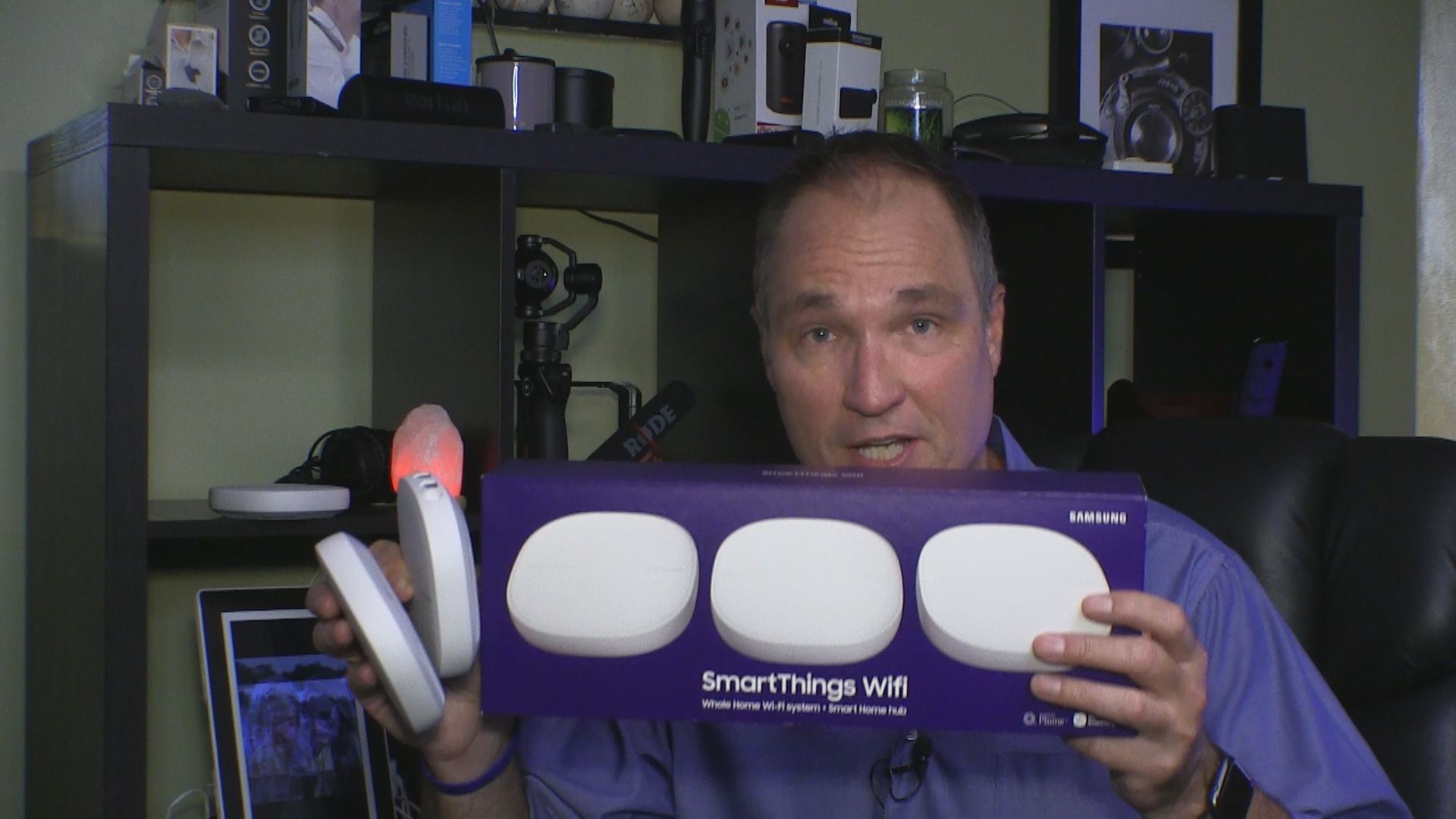- Home
- The Latest
- How to Improve Your WiFi

Call it a ‘first world problem’ but this device will boost your internet.
 One of the biggest complaints in my house is probably one you’ve either uttered or heard from your family. “The internet is slow”. I hear it when my kids or wife are trying to download something on their computer or trying to watch something on Netflix or Amazon. A weak or poor WiFi signal is what causes buffering when you’re trying to stream video. Millions of people notice this after they’ve cut the cable or satellite cord and switch to a streaming service.
One of the biggest complaints in my house is probably one you’ve either uttered or heard from your family. “The internet is slow”. I hear it when my kids or wife are trying to download something on their computer or trying to watch something on Netflix or Amazon. A weak or poor WiFi signal is what causes buffering when you’re trying to stream video. Millions of people notice this after they’ve cut the cable or satellite cord and switch to a streaming service.
There are ways to improve your WiFi coverage. Move the router to the center of your home, call your internet provider to make sure you’re getting the speeds you’re paying for and upgrade your WiFi router. There are also devices that boost or spread the WiFi signal throughout the house.
Mesh-routers are the latest solution to weak or poor WiFi signals in homes. There are several companies that make these devices including Samsung, Google, and Eero.
I recently installed a Samsung mesh router from its Smart Things line. The company provided me with a unit for an honest review. Here it is:
Our house has two levels and a basement where I have an internet router. It is not ideal but it’s an older house and the basement is where my provider would run the wires to install service. In our family room, where the TV is, we haven’t been getting a consistently strong signal where we could watch a movie on Netflix without it buffering and when it comes to streaming live programming on PS Vue, the signal was too weak for even an Amazon Fire Stick to connect. According to the settings, the strongest WiFi signal to that set was “poor”.
I installed one of the Smart Things routers in a room in the center of the house on the first floor. I managed to get an Ethernet connection to the Smart Things hub with a long cable connected to the WiFi router in the basement.
Opening the Smart Things app on my phone, the device was discovered and set up within a few seconds. I only had to give it a name and a password. Then I placed another hub in the family room and another hub in an upstairs bedroom. Each time the app found and activated the hub within seconds.
The Samsung Smart Things WiFi system came with 3 hubs but you can get just one or add more to the setup.
Once all three hubs were set up and activated I checked the network settings and the SmartThings network was sending a ‘very good’ signal to every room, TV and streaming player. No one has complained about slow connections watching YouTube videos on their phone or computer either.
Three hubs, Samsung claims, will spread the WiFi signal to 4,500 square feet and you can add up to 32 additional hubs and control them all from the same app. They’ll also have the same network name and your phone or tablet or laptop will automatically connect to the hub you’re closest to.
Mesh-routers are certainly a solution to the dead zone problems but they are on the expensive side. The Samsung Smart Things WiFi is $237 on Amazon right now, the eero Pro system is currently $500 while a 3-pack Google WiFi system is $240.
Who are they for? Anyone with a home that is multi-level or over 3,500 square feet and anyone who’ve found dead zones throughout their house. When you cannot run an Ethernet cable to the rooms you use most often, mesh routers are a great solution.
see how to set it up

